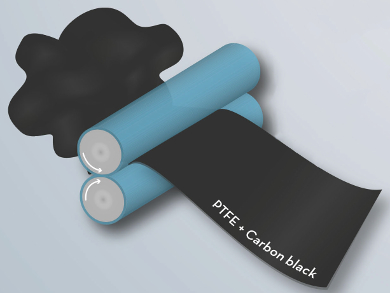Electric vehicles are mainly powered by lithium-ion batteries, which limit the range of the vehicle. Significant attention is being devoted to alternative, high-energy storage systems such as non-aqueous lithium-oxygen batteries. The Li/O2 battery, however, suffers from issues that limit the reversibility of the electrochemical process and the practical energy density. Therefore, new cell components are needed to improve this system and use it at a practical level.
Jusef Hassoun, University of Ferrara, Italy, Stefano Passerini, Helmholtz Institute, Ulm, and Karlsruhe Institute of Technology (KIT), both Germany, and colleagues have investigated the electrochemical behavior of Li/O2 cells using ionic liquid electrolytes and novel electrode materials. A very promising lithium-metal-free configuration was formed by coupling a LixSn-C alloy anode and a self-standing cathode in an ionic liquid.
The cathode is based on high-surface-area conductive carbon as the reaction host, and polytetrafluoroethylene (PTFE) as the binding agent to enhance the oxygen reduction reaction (ORR)/oxygen evolution reaction (OER) reversibility. The ionic liquid is a mixture of lithium bis(trifluoromethanesulfonyl)imide (LiTFSI) salt and N,N-diethyl-N-(2-methoxyethyl)-N-methylammonium bis(trifluoromethanesulfonyl)imide (DEMETFSI).
The prepared electrode/electrolyte couples show a high reversibility of the redox process. In addition, energy efficiency up to 88 % was obtained, making this system attractive for application.
- New Electrode and Electrolyte Configurations for Lithium-Oxygen Battery,
Ulderico Ulissi, Giuseppe Antonio Elia, Sangsik Jeong, Jakub Reiter, Nikolaos Tsiouvaras, Stefano Passerini, Jusef Hassoun,
Chem. Eur. J. 2018.
https://doi.org/10.1002/chem.201704293



